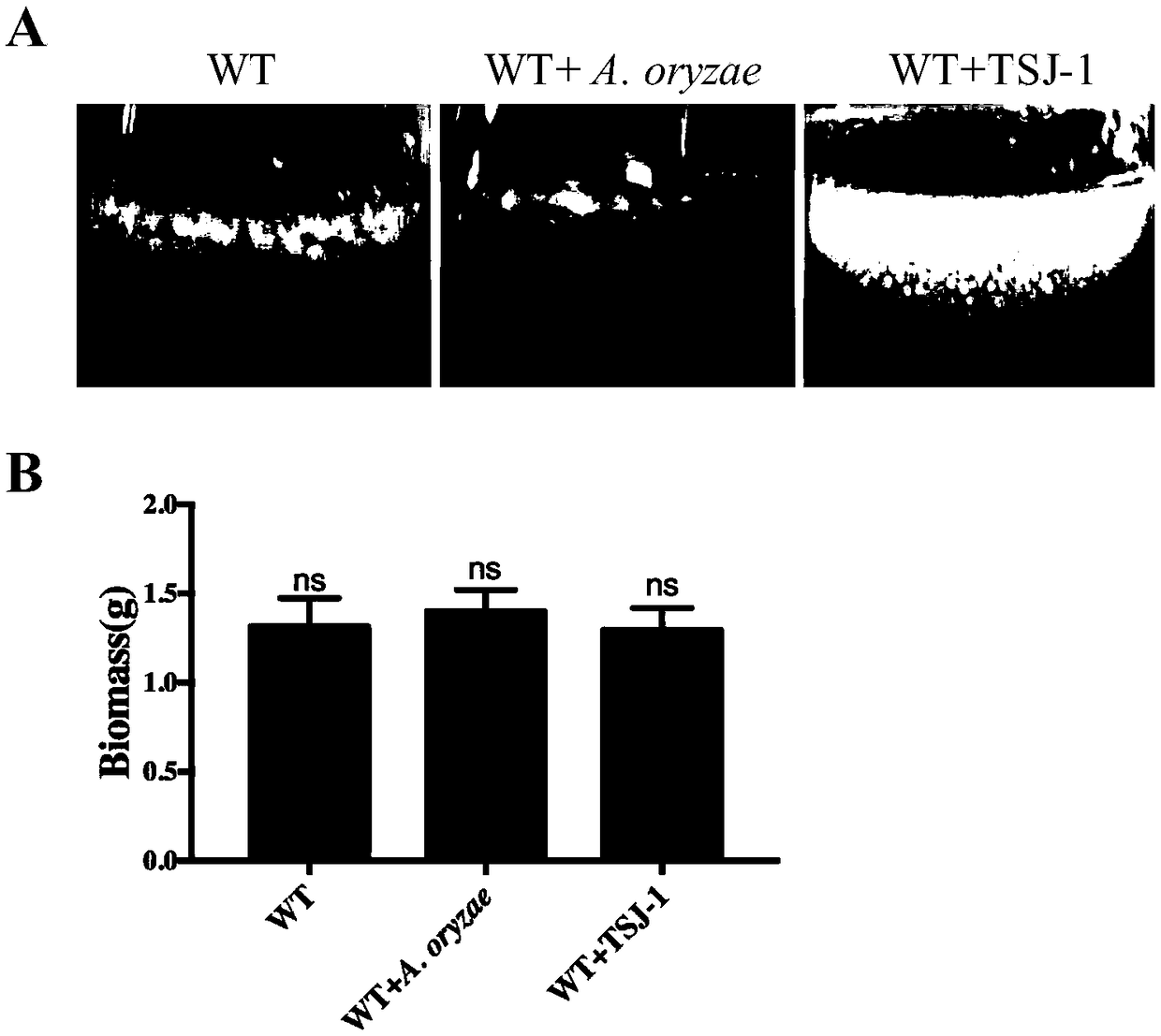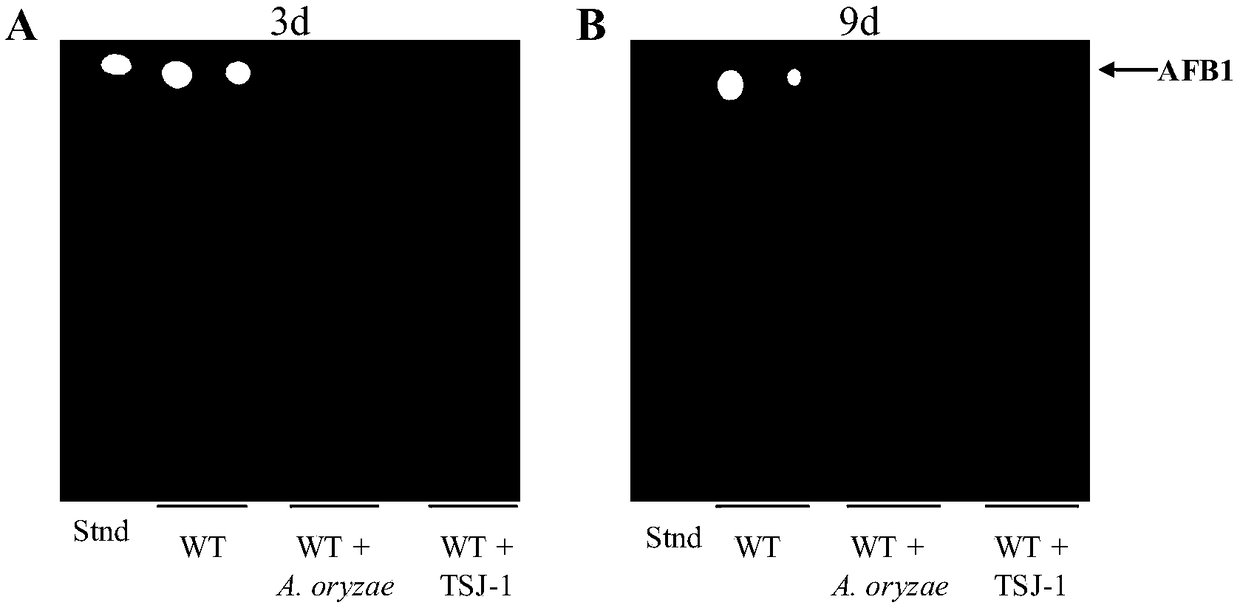Biological control method for toxicogenic aspergillus flavus
A technology of Aspergillus flavus and Aspergillus oryzae, applied in the field of biological control of toxin-producing Aspergillus flavus, can solve problems such as safety hazards and economic losses, and achieve the effects of early prevention and control, reduction of economic losses, reduction of infection and synthesis of toxins
- Summary
- Abstract
- Description
- Claims
- Application Information
AI Technical Summary
Problems solved by technology
Method used
Image
Examples
Embodiment
[0025] 1. Fresh Spore Collection
[0026] Pipette 2 μL of wild-type Aspergillus flavus, Aspergillus oryzae, and TSJ-1 mutant spores to inoculate on PDA solid medium, and culture in the dark at 37°C for 7 days; the spores were eluted with 0.001% Tween 20 spore eluent, Filter the mycelium with four layers of lens paper, and collect the conidia into a 10 mL centrifuge tube. Count the spores after dilution, and uniformly dilute the concentration of the spores to 10 6 individual / mL.
[0027] 2. Observation of the influence of Aspergillus oryzae and TSJ-1 mutants on the toxin production of Aspergillus flavus:
[0028] Dilute the concentration of freshly collected Aspergillus oryzae and TSJ-1 mutant spores to 10 3 pc / mL, 10 5 pc / mL, 10 6 Individual / mL; respectively take 1mL diluted spore liquid of each concentration and 1mL concentration of 10 6 A. flavus spores / mL were mixed and added to 50mL YES liquid medium. For the control group, only 1mL wild-type aspergillus flavus spore...
PUM
 Login to View More
Login to View More Abstract
Description
Claims
Application Information
 Login to View More
Login to View More - R&D
- Intellectual Property
- Life Sciences
- Materials
- Tech Scout
- Unparalleled Data Quality
- Higher Quality Content
- 60% Fewer Hallucinations
Browse by: Latest US Patents, China's latest patents, Technical Efficacy Thesaurus, Application Domain, Technology Topic, Popular Technical Reports.
© 2025 PatSnap. All rights reserved.Legal|Privacy policy|Modern Slavery Act Transparency Statement|Sitemap|About US| Contact US: help@patsnap.com



